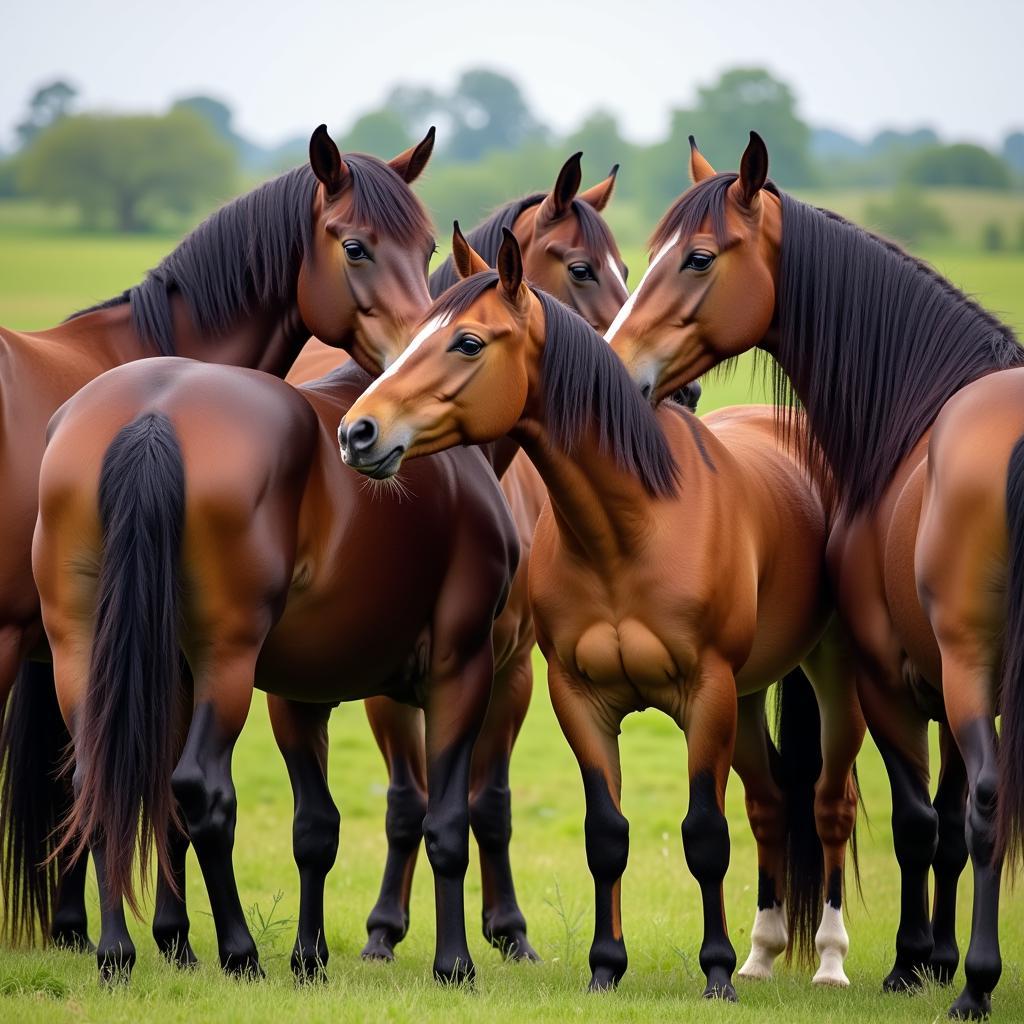The term “Horse Gloryhole” often arises from a place of genuine curiosity, albeit sometimes misguided, about equine anatomy and behavior. While the term itself is inappropriate and inaccurate, it presents an opportunity to address important questions about horse reproductive health, behavior, and overall well-being. Understanding these aspects is crucial for responsible horse ownership and care.
Equine Reproductive Anatomy: A Closer Look
A horse’s reproductive system is complex and plays a vital role in the species’ survival. Misunderstandings about equine anatomy, particularly concerning the mare’s reproductive tract, can lead to the misuse of terms like “horse gloryhole.” It’s important to use accurate and respectful language when discussing these sensitive topics. Accurate knowledge of equine reproductive anatomy is essential for breeding management, early disease detection, and ensuring the overall health of the mare.
The Mare’s Reproductive System
The mare’s reproductive system consists of the ovaries, oviducts, uterus, cervix, and vagina. Each component plays a distinct role in the reproductive process, from producing eggs to carrying a foal to term. Understanding the structure and function of each part is vital for responsible breeding practices.
The vulva, the external opening of the mare’s reproductive tract, is often the subject of curiosity and misunderstanding. It’s crucial to remember that this sensitive area should be treated with respect and care. Misinformation and the use of inappropriate terms like “horse gloryhole” can lead to harmful practices and compromise the mare’s well-being.
The Stallion’s Reproductive System
The stallion’s reproductive system is equally complex, consisting of the testes, epididymis, vas deferens, accessory sex glands, and penis. These organs work together to produce and deliver sperm for fertilization. Just like with the mare, understanding the stallion’s reproductive anatomy is critical for responsible breeding management.
Equine Behavior and Social Dynamics
Horses are social animals with complex communication systems. Their behavior, including reproductive behaviors, is influenced by a range of factors, including hormones, social hierarchies, and environmental stimuli. Understanding these factors is essential for managing horses effectively and ensuring their well-being.
Understanding Natural Breeding Behaviors
Natural breeding behaviors in horses are instinctive and driven by hormonal changes. Mares display estrus, or “heat,” signaling their receptivity to breeding. Stallions, in turn, exhibit courtship behaviors and respond to the mare’s signals. These natural interactions are essential for successful reproduction.
“Observing natural horse breeding behaviors provides valuable insights into their social dynamics and reproductive health,” says Dr. Emily Carter, DVM, a leading equine veterinarian with over 20 years of experience.
 Horses Interacting in a Pasture
Horses Interacting in a Pasture
Responsible Horse Ownership and Care
Responsible horse ownership involves understanding and respecting the animal’s physical and emotional needs. This includes providing proper nutrition, veterinary care, and a safe and enriching environment. It also means using accurate and respectful language when discussing equine anatomy and behavior.
“Promoting accurate information about horse anatomy and behavior is crucial for responsible horse ownership and dispelling harmful myths,” adds Dr. Carter.
Conclusion
Understanding equine anatomy and behavior is essential for responsible horse ownership and care. While curiosity about these topics is natural, it’s important to use accurate and respectful language. The term “horse gloryhole” reflects a misunderstanding of equine anatomy and should be replaced with accurate terminology. By seeking out reliable information and prioritizing the well-being of horses, we can contribute to a more informed and compassionate equine community.
FAQ
- What is the correct terminology for the mare’s reproductive organs? The correct terms are vulva, vagina, cervix, uterus, oviducts, and ovaries.
- How can I learn more about responsible horse breeding practices? Consult with a qualified equine veterinarian and experienced breeders for guidance on responsible breeding.
- What are some common signs of estrus in mares? Common signs include frequent urination, tail raising, winking of the vulva, and increased receptivity to the stallion.
- How do horses communicate with each other? Horses communicate through a combination of body language, vocalizations, and scent cues.
- What are the essential elements of responsible horse ownership? Responsible horse ownership involves providing proper nutrition, veterinary care, a safe and enriching environment, and respectful handling.
For further assistance, please contact us at Phone Number: 0772127271, Email: [email protected] Or visit us at: QGM2+WX2, Vị Trung, Vị Thuỷ, Hậu Giang, Việt Nam. We have a 24/7 customer service team.